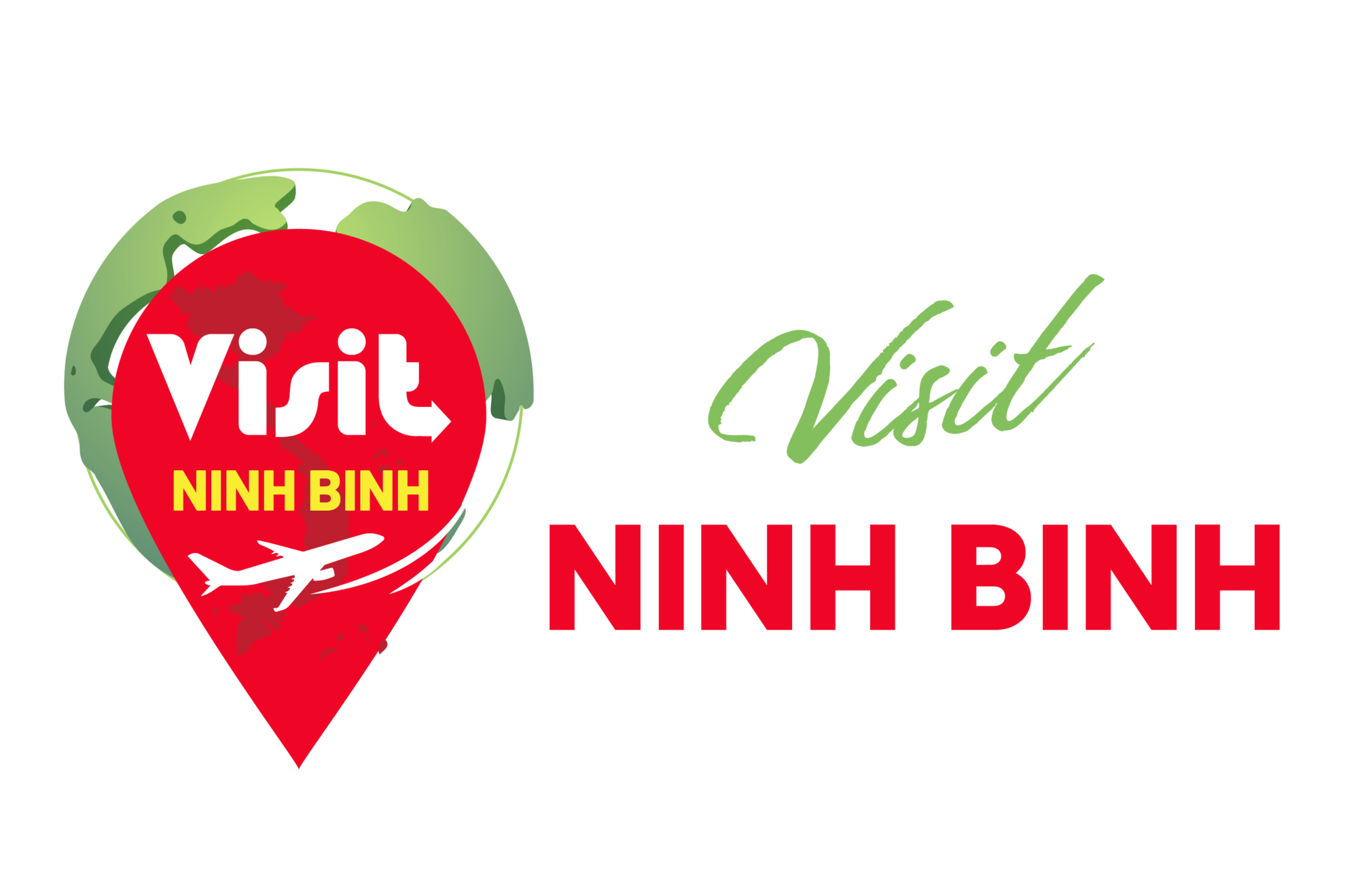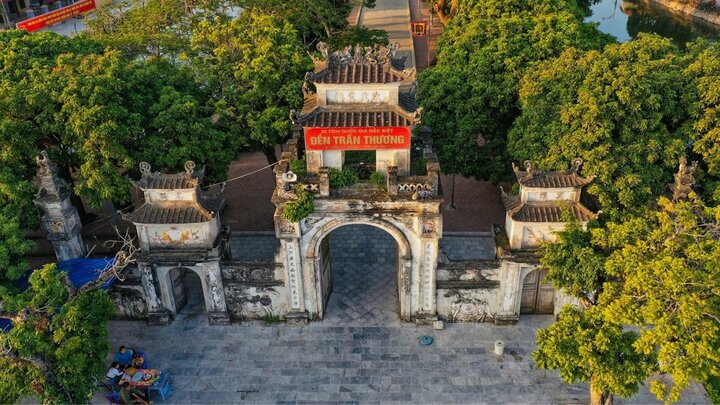1. Where is Tran Thuong Temple and why is it a special destination?
1.1. Location of Tran Thuong Temple on the Ha Nam map.
Tran Thuong Temple is located in Tran Thuong commune, Ninh Binh province, about 16 km from the center of Phu Ly ward and about 70 km south of Hanoi. This convenient location helps Tran Thuong Temple become a noteworthy stop for visitors departing from the capital as well as the northern provinces.
The temple is situated on a vital transportation axis, easily accessible by bus, private car, or public transport. Notably, in the past, this place once held key waterways and roads of the Red River Delta region, highlighted by the "Luc Dau Khe" system consisting of 6 small streams surrounding it, creating an advantage for the transportation of food supplies during wartime.
This terrain rich in natural resources and this strategic location have significantly contributed to helping this place both maintain its historical significance and become a destination that attracts numerous visitors seeking to explore it today.
1.2. Historical origin and special significance.
The history of Tran Thuong Temple is deeply associated with Tran Hung Dao (also known as Tran Quoc Tuan), the outstanding general of the 13th century. This place was formerly used as a key granary that he chose to store food and weapons to serve the cause of defending the country against the invasions of the Mongol army.
After important victories, Tran Quoc Tuan established his final resting place in this land, from which Tran Thuong commune formed, developing around the ancient granary relic. Locals also call this place "tao le", implying the creation of prosperity and abundant blessings.

View in front of Tran Thuong Temple. (Source: Collected)
2. Detailed guide on how to get to Tran Thuong Temple 2025
2.1. From Hanoi or Northern provinces to Tran Thuong Temple.
Hanoi - Ly Nhan bus routes operate all day, ticket prices range from 80,000 to 120,000 VND per trip, conveniently departing from Giap Bat, My Dinh, or Gia Lam bus stations, allowing tourists to easily choose a suitable departure time.
For those who choose to travel by car, the journey starts from the Phap Van – Cau Gie expressway, continue down to Phu Ly ward then turn towards Ly Nhan. The total travel time is usually around 1.5 to 2 hours, depending on traffic conditions and travel speed.
If using a motorbike, follow National Highway 1A, reach the Phu Ly intersection then turn towards Ly Nhan. This route is quite clear and suitable for tourists who enjoy the feeling of freedom on the rural roads of the North.
2.2. Traveling from Ho Chi Minh City and the South.
Tourists departing from Ho Chi Minh City can choose to fly and land at Noi Bai Airport, then continue using transportation such as by road from Hanoi to reach Tran Thuong Temple. Travel time includes 2 hours of flight and an additional 2.5 hours from the airport to the temple.
The North-South train is also an interesting option, tourists arrive at Phu Ly station then take a taxi or bus for about 12 km to Tran Thuong commune. This experience is very suitable for those who want to admire the peaceful countryside scenery along the northern railway line.
Additionally, the Saigon – Ha Nam bus route is also a cost-saving option, travel time is over 30 hours, suitable for tourists with ample time and who enjoy long-distance travel experiences.
2.3. Transportation within Ha Nam province.
The intra-provincial bus system with the convenient Phu Ly – Ly Nhan route stops near Tran Thuong Temple, ticket prices range from 15,000 to 25,000 VND per trip. This option is suitable for tourists who like to explore local life.
Taxi services from Phu Ly or the train station to the temple cost around 150,000 – 200,000 VND, suitable for families or groups of friends prioritizing comfort and convenience. If you need flexibility and prefer to be proactive, you can also rent a motorbike in Phu Ly or contact local services, especially suitable when you want to stop for photos along the way.
During festival occasions, for a smooth journey, you should prepare your vehicle early and choose to depart early in the morning.
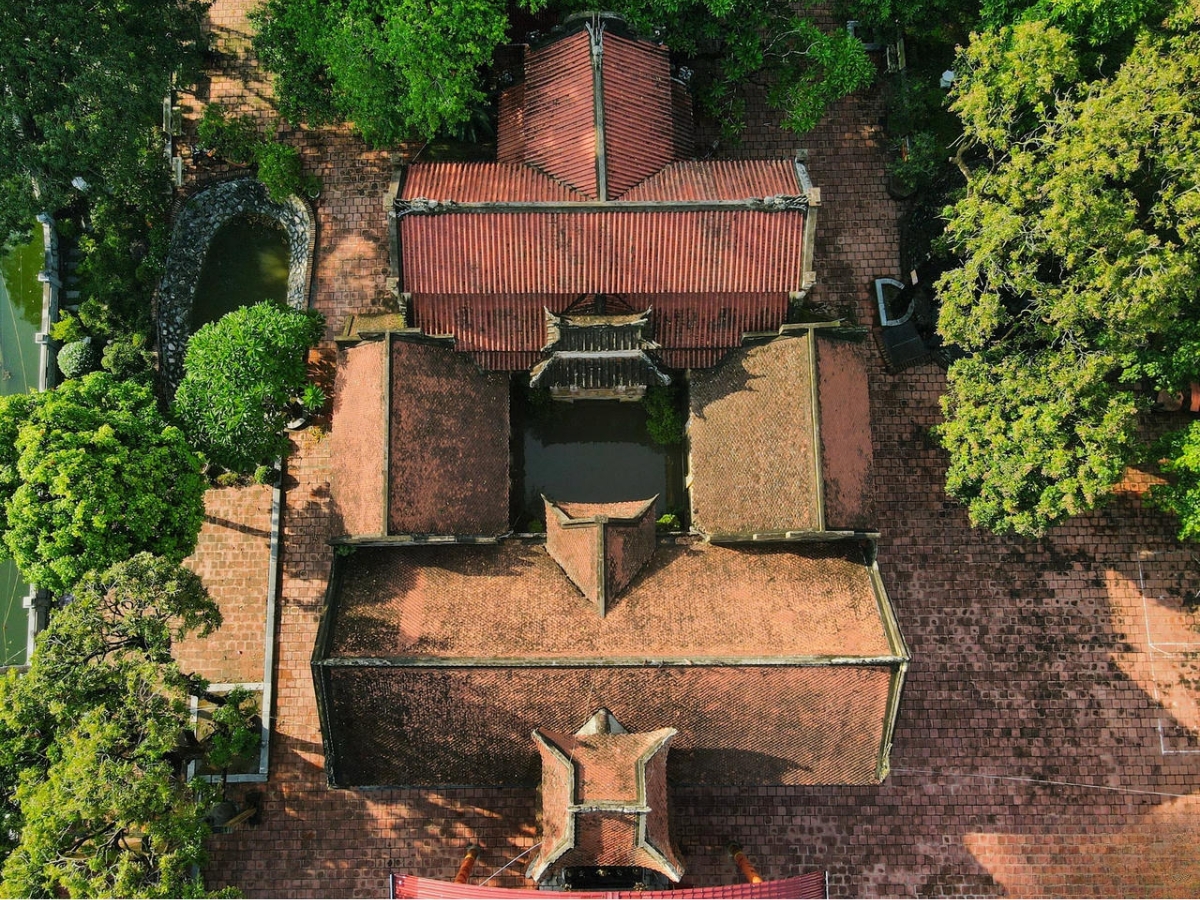
It is advisable to choose a suitable time to travel to avoid traffic jams. (Source: Dai Doan Ket Newspaper)
3. Discover the unique architecture and layout of Tran Thuong Temple
3.1. Overall architecture and main structures.
The architecture of Tran Thuong Temple is arranged in a traditional style, including categories such as the Outer Gate, Inner Gate, Front Hall, Middle Hall, Harem, ancient well, and the left and right wings. The entire complex reflects the philosophy of "Tu thuy quy duong" – where water streams converge at one point, symbolizing the gathering of heaven and earth's spiritual energy.
Tran Thuong Temple is also special for its beautiful landform shaped like "hinh nhan bai tuong" (human figure paying homage to a general), "ngu ma that tinh" (five horses and seven stars), showing respect for the great general. From the solid foundation to the delicate curved roof, the structure applies traditional construction techniques deeply rooted in Vietnamese culture.
Each area in the temple has its own function, from the space welcoming visitors from all directions to the sacred area for grand ceremonies. The harmonious integration of the various components contributes to an overall atmosphere that is both solemn and familiar.
3.2. Outstanding motifs and carving techniques.
The sculptural art at Tran Thuong Temple impresses with intricate motifs of dragons, phoenixes, and clouds and water, meticulously depicted on columns, roofs, and ceremonial doors. These images enhance the solemnity, while harmoniously integrating spiritual elements with natural beauty.
A notable highlight is the wood and stone carving art of the Tran dynasty, featuring the motif "nhan bai tuong" – depicting people respectfully bowing before the general. The message of venerating deities and honoring generals is skillfully conveyed through each carved line.
Each decorative detail holds its own meaning, from dragon and phoenix patterns symbolizing power, to clouds and water signifying prosperity and good fortune. These works not only beautify the space but also help spread profound cultural and spiritual values.
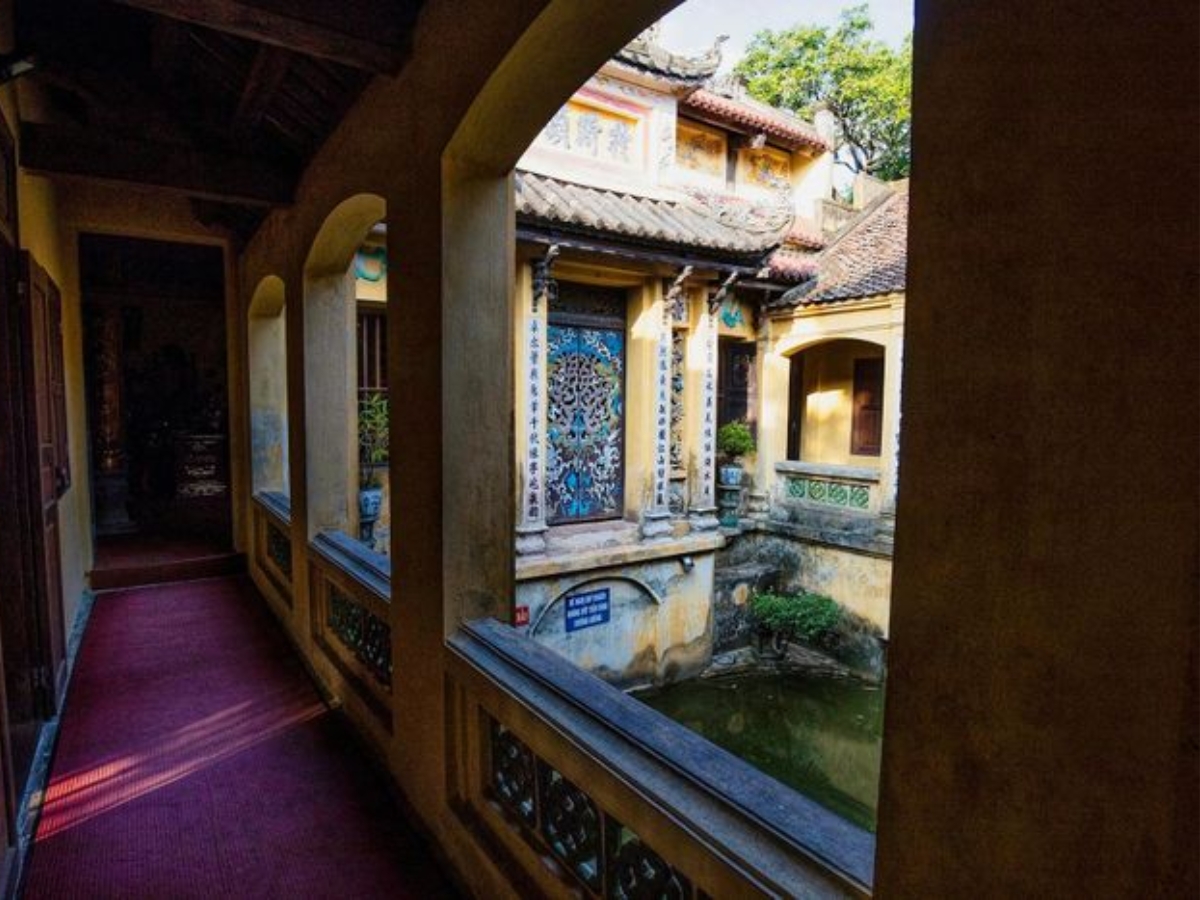
Motifs of dragons, phoenixes, and clouds are elaborately depicted on each column, roof, and palanquin door. (Source: Collection)
4. Archaeological Value and Collection of Tangible Heritage at Tran Thuong Temple
4.1. Rare Archaeological Artifacts Previously Discovered
Tran Thuong Temple currently preserves an extremely rich collection of relics, antiques, and worship items, with a total of 202 artifacts of high artistic and historical value. These artifacts are diverse in type, from worship items such as statues, altars, reliquaries, to palanquins and systems of banners, couplets, and large horizontal boards. In addition, the relic site also preserves many types of precious materials, including ceramics such as vases, incense burners; stone objects like turtles, mythical creatures, elephants; and also items made of silver and bronze such as silver swords with tortoise shell sheaths, silver bracelets, silver cups. All have contributed to creating a valuable cultural treasure, reflecting the richness and sophistication of traditional handicraft art.
Notably, among the artifacts at the temple are 38 royal decrees on paper, precious legacies recording important historical information. The presence of these antiques not only adds value to the relic site but also clearly demonstrates the rich history and culture of Tran Thuong Temple .
4.2. Worship Items, Statue of Duc Thanh Tran, and Ancient Books.
The statue of Tran Hung Dao is crafted from precious wood, exuding a majestic aura while also radiating exceptional benevolence. This sculpture is the crystallization of technical skill and artistic inspiration, fully conveying the heroic spirit of the talented general.
Additionally, the collection of divine scrolls and ancient books at Tran Thuong Temple clearly demonstrates the religious artistic value of the Tran Dynasty. These are national treasures that need to be carefully preserved and studied to continue to be passed down to future generations.
Each worship item, such as ancient bronze lamps and offering trays, reflects artistic value and holds sacred meaning. Not only serving rituals, they are also unique artifacts attracting the interest of both tourists and researchers.
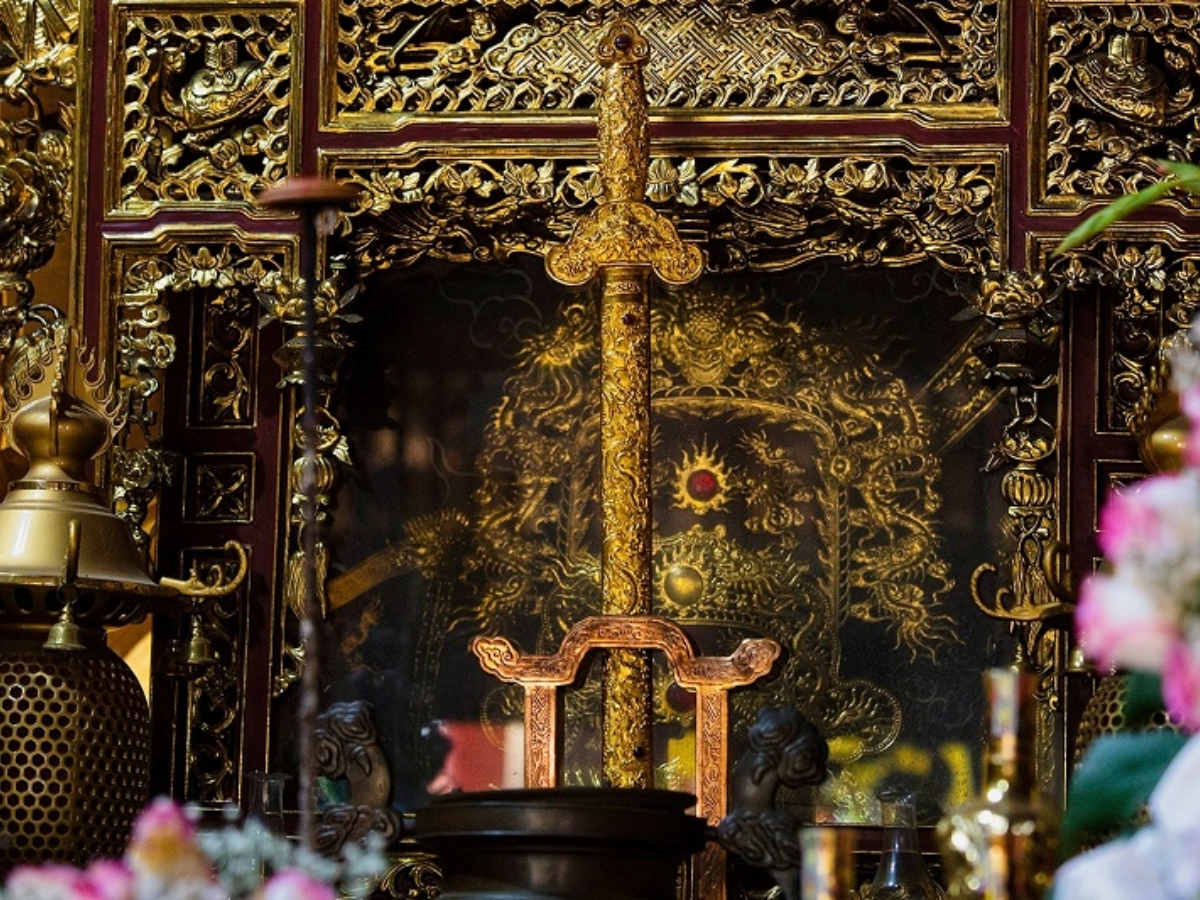
Rare ritual objects preserved and conserved to this day of the temple. (Source: Collection)
5. Traditional Festivals and Outstanding Features of National Intangible Heritage
5.1. Tran Thuong Temple Festival and Important Rituals.
The Phat Luong Festival is held on the 14th - 15th day of the first lunar month, attracting a large number of visitors from all directions. The program includes a solemn opening ceremony, a sacred palanquin procession, the ritual of drawing water for provisions, and a ceremony praying for national peace and popular well-being.
The fish sacrifice ritual on the 25th day of the first lunar month is also a highlight, integrating the long-standing traditions of the Ly Nhan residents with the meaning of gratitude to nature and praying for a favorable and prosperous year.
During the festival season, Tran Thuong Temple becomes a vibrant spiritual cultural center with the resounding beats of drums and gongs, chanting prayers, and the excitement of tens of thousands of attendees. This is an occasion for visitors to fully experience the sacred atmosphere and national traditional values right in the land of Ha Nam.
5.2. Phat Luong Ceremony of Duc Thanh Tran – Intangible Heritage.
The Phat Luong ritual at Tran Thuong Temple has been awarded the title of national intangible cultural heritage, recreating the historical event of distributing provisions to reward the army and people after the victory over the Nguyen Mong by Tran Hung Dao. This event holds special spiritual cultural significance in Vietnamese festivals.
On the evening of February 11, 2025 (corresponding to the 14th day of the first lunar month of the At Ty year), the ceremony was solemnly held at the Special National Relic Tran Thuong Temple . The festival is organized to educate future generations about the tradition of 'drinking water, remembering its source', honor the great contributions of Hung Dao Dai Vuong Tran Quoc Tuan, and promote the cultural beauty of Ha Nam. After 15 years of organization, the Phat Luong Festival has become a beautiful New Year cultural tradition, attracting a large number of people and visitors from all directions.
The Phat Luong ritual officially begins at 10:15 PM. After the solemn spiritual rituals performed by delegates along with Venerable Monks and Buddhist Monks of the Vietnam Buddhist Sangha, the 12 provision distribution gates outside the temple simultaneously open to distribute provisions to the people and visitors. This activity is an opportunity for everyone to express their reverence for the national hero, while contributing to preserving and promoting the traditional cultural identity of the Vietnamese nation.
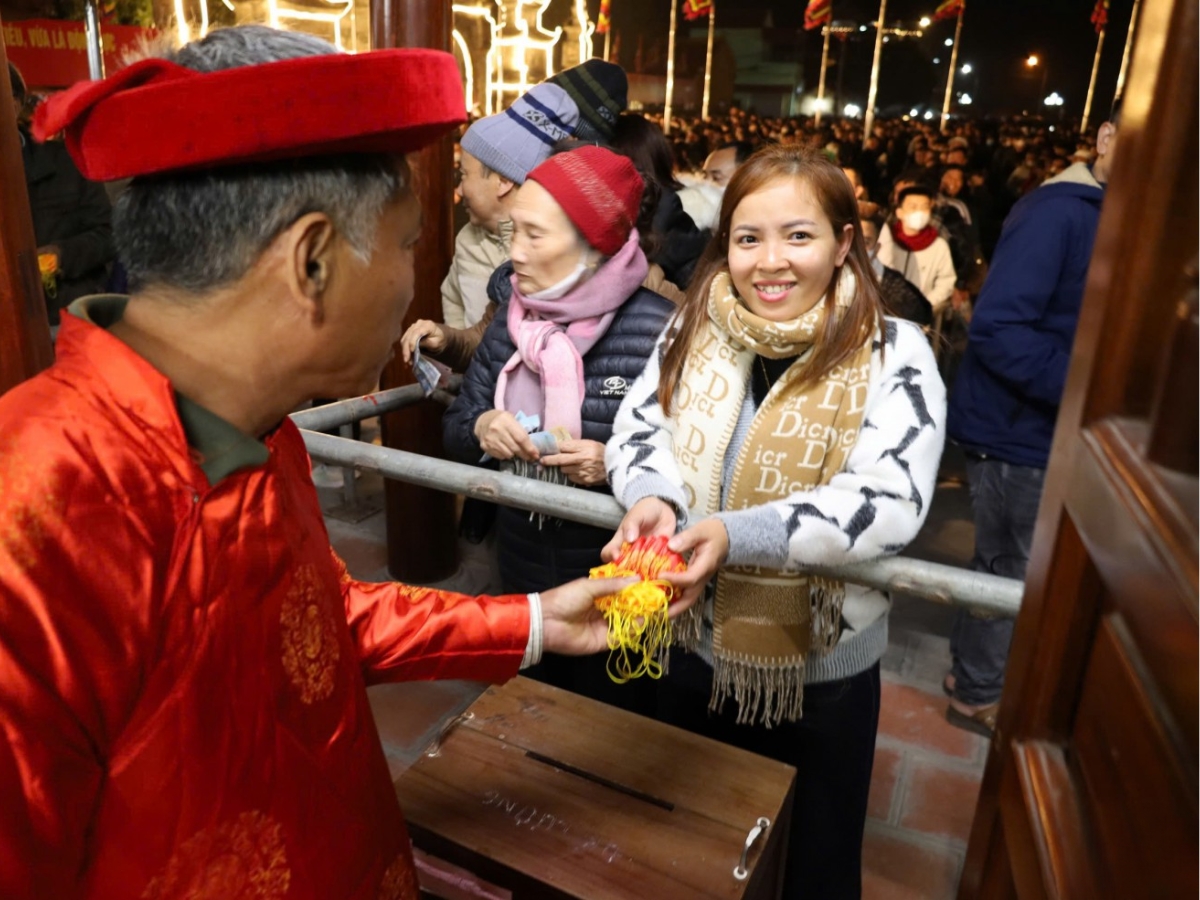
People are happy to receive their salary. (Source: Ha Nam TV)
6. Unmissable experiences when visiting Tran Thuong Temple
6.1. Spiritual tourism and immersing in historical values.
Participating in the peace-praying ceremony, offering sacrifices at Tran Thuong Temple brings a peaceful experience and a sense of tranquility. Visitors can fully join the crowd in a solemn atmosphere, feeling the patriotic tradition and pride echoing through each ritual.
Interacting and conversing with locals not only helps visitors grasp many genuine sentiments but also deepens their understanding of the salary distribution tradition and the vivid historical stories surrounding Tran Thuong Temple. These relatable stories and simple sharing are valuable cultural resources.
6.2. Exploration, photography, and check-in activities of ancient architecture.
Tran Thuong Temple offers many beautiful photo opportunities such as the ancient gate, intricately carved stone walls, shady old trees, and a clear lake. The meticulously carved dragon and phoenix details are highlights for artistic photos.
If you love photography, take advantage of the soft light in the early morning or late afternoon to get the highest quality pictures. The quiet, spiritually rich space of the temple is an ideal backdrop for capturing photos of history and tradition.
Moments of check-in at Tran Thuong Temple all contribute to promoting the image of the homeland's cultural heritage to many friends at home and abroad. Each captured photo is a historical story, containing the characteristic cultural imprint of the Northern Delta region.

Countless stunning check-in spots at Tran Thuong Temple. (Source: Ha Nam TV)
7. Useful notes, experiences, and tips when visiting Tran Thuong Temple in 2025
7.1. Outfit suggestions, preparing offerings, and preserving culture.
When visiting Tran Thuong Temple, you should choose modest attire, elegant colors, suitable for the spiritual space. Choosing neat attire is also a way to show respect for the relic and the local community.
Offerings should include fresh flowers, fruits, candies, incense, and grains; it is not advisable to offer votive paper or real money on the altar. The meticulousness in preparing offerings both shows reverence and contributes to spreading the beauty of Vietnamese customs.
You also need to comply with regulations on maintaining general hygiene, do not litter indiscriminately, and avoid crowding in the area where blessings are distributed. Civilized behavior is a great plus that makes your journey more complete.
7.2. Best time to visit – tips to avoid crowds and enhance the experience.
To experience a quiet space and convenient movement, it is advisable to choose the early morning of the 14th or outside peak hours on the 15th of the first lunar month to visit Tran Thuong Temple. At this time, the rituals are still fully performed, allowing visitors to explore more comfortably.
Arrange transportation and accommodation early if you plan to attend the festival. Thorough preparation will help you avoid unexpected issues and enjoy the trip to the fullest.
Besides the major festival occasions, Tran Thuong Temple still retains its tranquility and sacred atmosphere, so trips on weekdays will surely bring a peaceful experience, suitable for visitors who love exploring the depth of history and culture.
7.3. Notes on security, hygiene, and heritage protection.
Security at Tran Thuong Temple is always prioritized, with security personnel stationed at all key points and blessing distribution areas. Visitors should comply with reminders from security forces as well as instructions from the organizing committee, ensuring general order and safety.
Respecting and preserving the value of the relic is a shared responsibility; visitors should not touch or interfere with artifacts, ancient architecture, and the surrounding natural landscape. Joint efforts to protect heritage today are a gift of intact values to future generations.
Another small note is to be cautious when using fire during rituals, especially when lighting incense, to prevent risks and maintain the safety of the entire complex.

It is necessary to maintain safety and adhere to etiquette when visiting Tran Thuong Temple, especially during the festival season. (Source: Collected)
8. Suggested combination of spiritual tourism in Ha Nam 2025
8.1. Notable places near Tran Thuong Temple.
Long Doi Son Pagoda stands out with its ancient architecture and beautiful scenic location, not too far from Tran Thuong Temple, making it very convenient to connect within a one-day itinerary. This place offers a peaceful meditative atmosphere, different from the temple's ritual space.
Sun World Ha Nam is an entertainment and recreational spot combined with cultural experiences, suitable for families with young children. The diversity of destinations makes the journey to explore Ha Nam rich and new.
8.2. Sample itinerary: connecting sightseeing, festivals, and cultural experiences.
One-day itinerary: morning attending the ceremony at Tran Thuong Temple, lunch with local dishes such as hot rolled rice cakes or Vu Dai village braised fish, afternoon continuing to explore Long Doi Son Pagoda.
Two-day itinerary: the first day is mainly dedicated to the fortune distribution festival, exploring the architecture and enjoying the space of Tran Thuong Temple, with an overnight stay in Phu Ly. On the next day, visitors should visit Sun World Ha Nam and stop by craft villages to buy local specialties as gifts.
Specialties such as Kien Khe rice paper crackers, Vu Dai village braised fish, or Ly Nhan sweet tangerines will be meaningful gifts for relatives. The journey is not just about sightseeing but also an opportunity to explore deeper into the life and culture of this land.

End the trip with a fun experience at Sun World Ha Nam.
Tran Thuong Temple is a unique intersection of historical, cultural, and spiritual heritage, preserving the heroic memories of the nation and the military wisdom of the Tran dynasty. The intangible 'Phat Luong' festival along with the ancient architectural space create an unforgettable meaningful travel experience. In 2025, come to Tran Thuong Temple to feel the sacred values and national pride in the journey to discover precious heritage in the land of Ha Nam!
